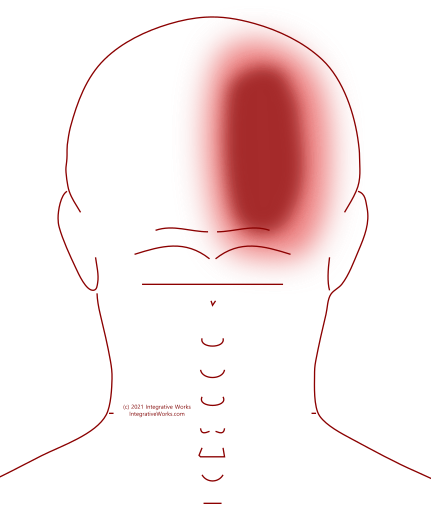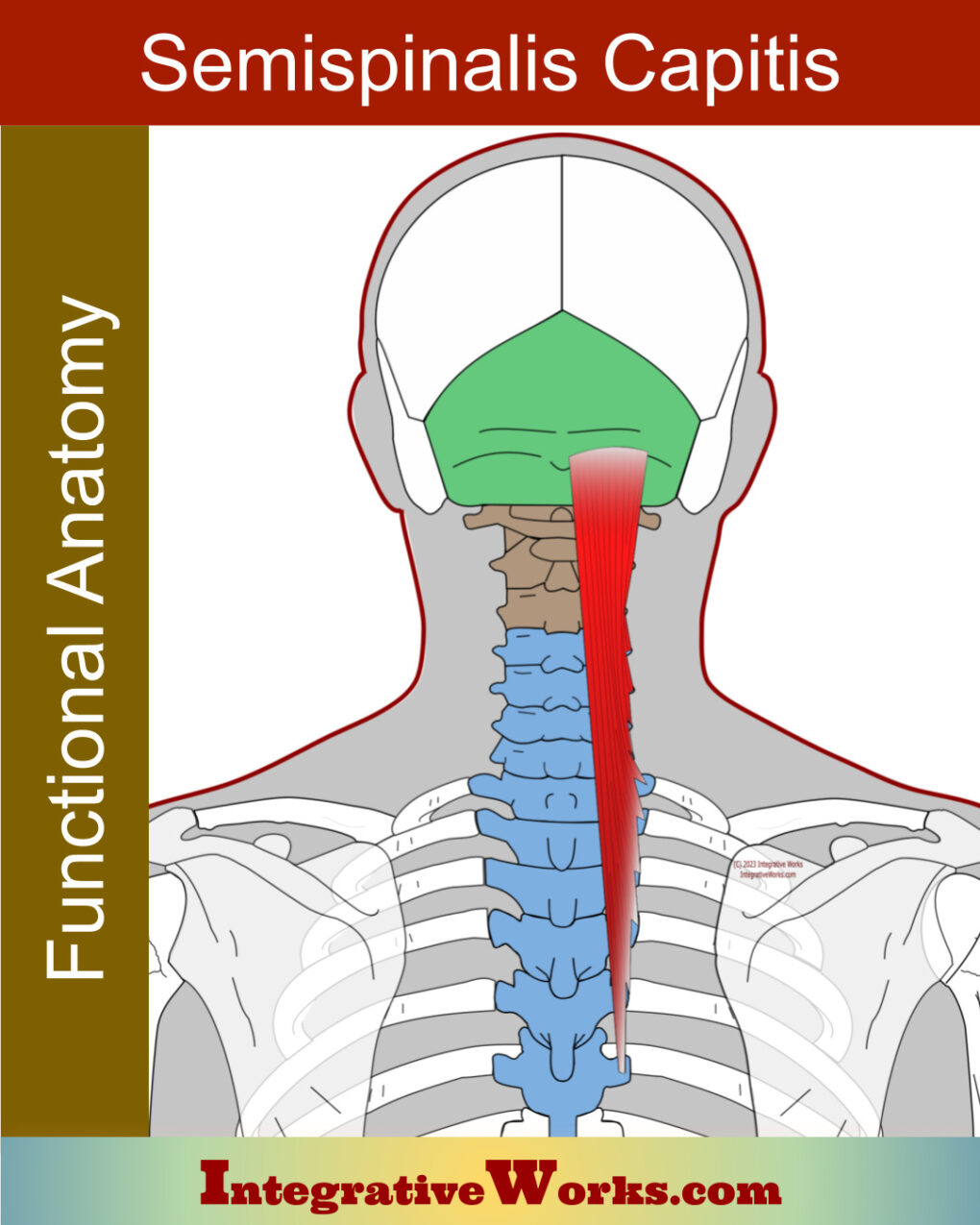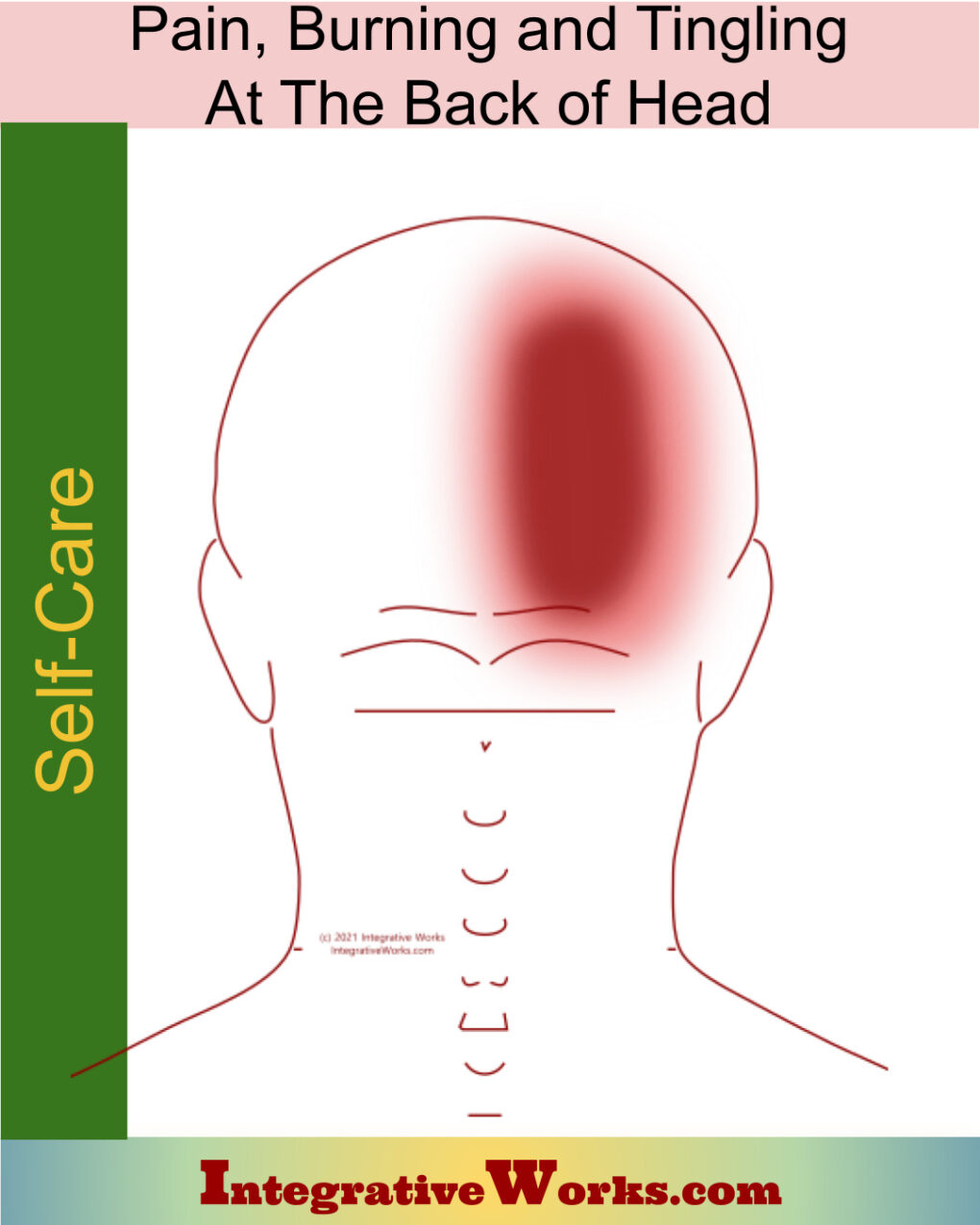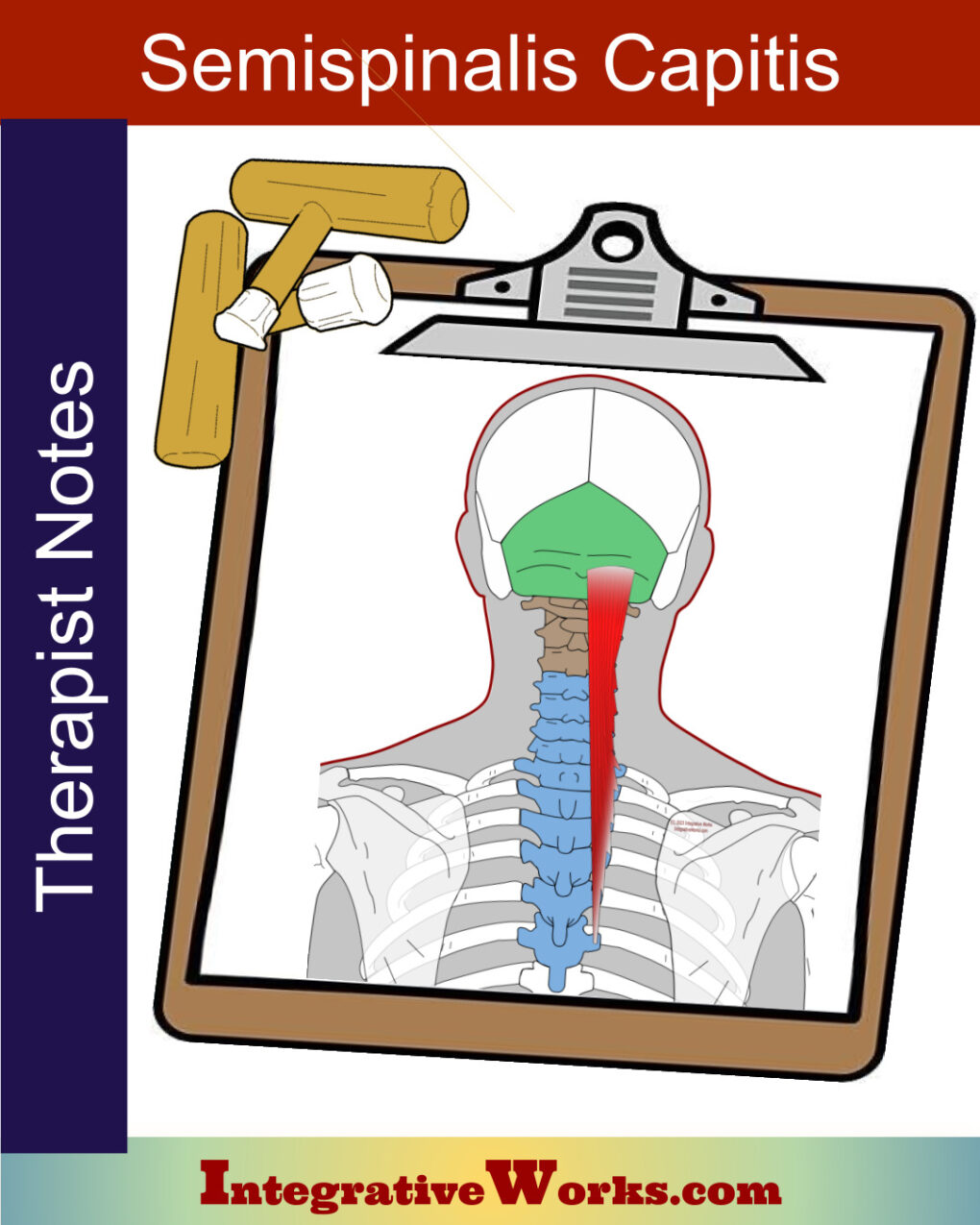Table of Contents
- How People Describe This Pain Pattern
- How You Activate and Intensify This Pain Pattern
- Self-Care – Getting Relief on Your Own
- Musculoskeletal Anatomy Behind Your Pain
- Therapy Notes for Massage and Bodywork
How People Describe This Pain Pattern

When the trigger point severely restricts the muscle, people complain of pain, burning, tingling, and “that numb feeling” on the back of the head. They are often concerned because the pain is tingling and can feel prickly along the back of their head. They may say that it bothers them less now but will bother them if they keep their head tilted back.
When the trigger point is mild, people complain of a headache and run their hands up and down the back of their head on one side. They often complain of a bigger area of pain and are surprised at how small the area is that they are actually touching.
Heat makes it Worse
Sometimes, they’ll complain that they tried heat, but the pain and tingling got worse.
How You Activate and Intensify This Pain Pattern

They often do not know why or how this happened unless there was an incident that whipped their head around. It might be a car accident but also occurs when they fall backward while holding their head up. In these cases of trauma, there are often several patterns. This one is particularly alarming because of the “nervy” pain in their head.
Looking Up With a Twist
I have created this headache by working with a high screen on the wall in front of me. After hours of doing so, my head will start to get itchy and tingly before a headache comes on. It can also be caused by laying the top of the neck on the edge of a hard surface. For instance, washing hair in the sink at a salon, lying on the arm of the couch might aggravate this trigger point.
Pillow Pressure
Sleeping with pressure on the back of the head and neck may bother them and disturb sleep. They prefer to get relief from an ice pack on the back of their neck than heat and may complain that heat makes it worse very quickly.
The Musculoskeletal Anatomy Behind Your Pain
Musculoskeletal Anatomy
This post on anatomy contains standard information about the origin, insertion, function, and innervation of muscles. Additionally, it includes information on functional considerations and anomalies.
Find Related Posts
Anatomy posts have a grid of all related posts. This includes posts on pain patterns, self-care, therapy notes, NMT protocols, cranial techniques, and cases.
Getting Relief on Your Own
Clinically Proven
Self-Care Strategies
Self-Care Posts have common sections to make them easy to follow and understand:
- Activities to Avoid or Change
- Strategies for Quick Relief
- Stretches and Exercise for Longer-Lasting Relief
- Yoga Corner
Therapy Notes for Massage and Bodywork
Better Bodywork
Through Shared Expertise
Therapy Notes provide details for cranial, spinal, and local joint work. These notes also link to a traditional neuromuscular protocol.
By treating integrative components first, direct work on the muscle becomes less intense while providing longer-lasting relief.
Support Integrative Works to
stay independent
and produce great content.
You can subscribe to our community on Patreon. You will get links to free content and access to exclusive content not seen on this site. In addition, we will be posting anatomy illustrations, treatment notes, and sections from our manuals not found on this site. Thank you so much for being so supportive.
Cranio Cradle Cup
This mug has classic, colorful illustrations of the craniosacral system and vault hold #3. It makes a great gift and conversation piece.
Tony Preston has a practice in Atlanta, Georgia, where he sees clients. He has written materials and instructed classes since the mid-90s. This includes anatomy, trigger points, cranial, and neuromuscular.
Question? Comment? Typo?
integrativeworks@gmail.com
Interested in a session with Tony?
Call 404-226-1363
Follow us on Instagram

*This site is undergoing significant changes. We are reformatting and expanding the posts to make them easier to read. The result will also be more accessible and include more patterns with better self-care. Meanwhile, there may be formatting, content presentation, and readability inconsistencies. Until we get older posts updated, please excuse our mess.




